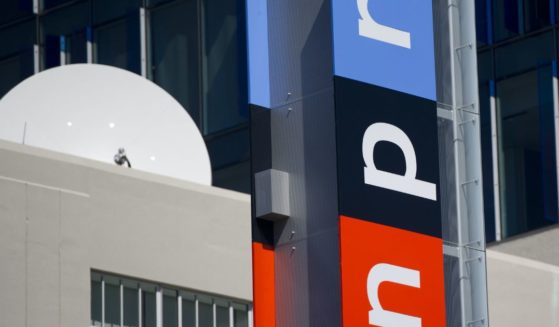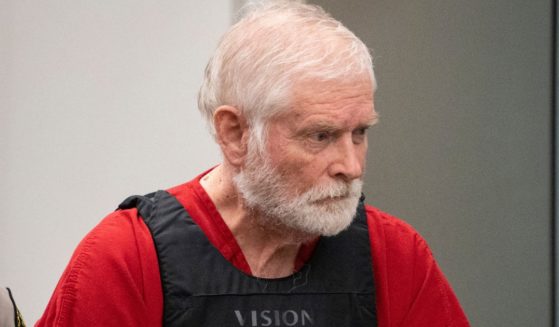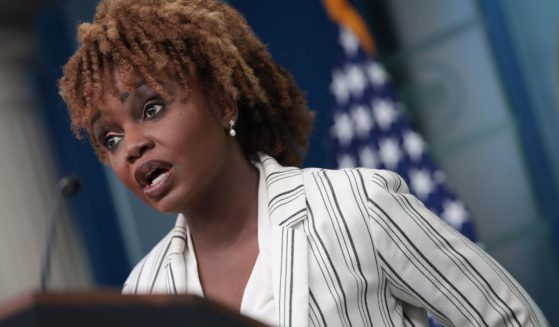Despite 'Nasty' Storm Predictions, Forecasters Forced to Admit It's 'Freakishly Quiet in the Atlantic'
It’s been quiet — too quiet — this Atlantic hurricane season, meteorologists and residents of storm-prone areas whisper almost as if not to tempt fate.
A record-tying inactive August is drawing to a close and no storms have formed, even though it is peak hurricane season and all experts’ pre-season forecasts warned of an above normal season that a previous Associated Press report predicted would be “nasty.”
Nearly all the factors that meteorologists look for in a busy season are there.
Warm ocean water for fuel? Check.
Not a lot of wind shear that decapitates storms? Check.
La Nina, the natural cooling of the central Pacific that changes weather patterns worldwide and increases Atlantic storm activity? Check.
Yet zero storms formed.
Surprised experts point to unusual persistent dry air and a few other factors. But each time they and computer simulations think something is brewing, nothing comes of it.
“It has been surprisingly and freakishly quiet in the Atlantic,” University of Miami hurricane researcher Brian McNoldy said, pointing out that weak Tropical Storm Colin fizzled out on July 2 and there’s been nothing since.
It’ll be the first time since 1941 that the Atlantic has gone from July 3 to the end of August with no named storm, Colorado State University hurricane researcher Phil Klotzbach said.
Since 1950, only 1997 and 1961 had no named storms in August and 1961 then went hyperactive in September, including deadly Carla, he said.
In Lake Charles, Louisiana, one of the more weather-battered cities in the past decade, residents have noticed how quiet the hurricane season is so far and it’s almost “testing fate” to bring it up, Mayor Nic Hunter said.
From August 2020 to August 2021, the city was hammered by two hurricanes — Laura and Delta — only six weeks apart, a deep freeze and spring flooding. Residents still have blue tarps on their roofs.
“I think there’s a lot of knocking on wood. There’s a lot of prayers,” Hunter said. “Until the season is over, I don’t think anybody’s going to have any sighs of relief.”
Certainly not 74-year-old Shirley Verdin, who lives about 200 miles away in Bayou Point-Au-Chien, where Hurricane Ida ripped through on Aug. 29 last year. She now lives in a Federal Emergency Management Agency trailer next to her gutted home that will be demolished down to the pilings this weekend so it can be rebuilt.
There are wisps of potential storm systems swirling in the Atlantic that meteorologists are following and so is Verdin. Closely.
“I know there’s something out there right now,” she said.
The National Hurricane Center is watching three thunderstorm systems in the Atlantic and gives them all at least a 50 percent chance of becoming a named tropical storm, with one of them a likely sounding 80 percent. But Colorado State’s Klotzbach has seen this before this year and isn’t counting on them.
Just late last week, the computer forecast models predicted three maybe four storms forming, including one becoming a major hurricane with winds of more than 110 mph, Klotzbach said.
Then nothing.
For the past month and a half, thunderstorms that could be seeds of hurricanes power off Africa looking strong enough “but then they encounter a lot of dry air that’s just sitting over the Atlantic,” University of Albany atmospheric scientist Kristen Corbosiero said. “The dry air has really been the main thing that’s been stopping storms from really getting going.”
Relative humidity is about 15 percent below normal and there’s been Saharan dust in there making it drier, McNoldy and Klotzbach said.
The dry air does a couple things, Corbosiero said. Those thunderstorms become more potent and get their energy as warm moist air rises off the ocean. The ocean is warm enough, but the dry air causes that water to evaporate, cool and go down, not up, she said.
That dry air also helps create cross winds about 2 miles up “that can really do damage to a storm trying to form,” Corbosiero said.
Matthew Rosencrans, the National Oceanic and Atmospheric Administration‘s lead hurricane outlook forecaster, said he sees signs that the dry air is ending and normal moisture will be returning, which could mean more storms.
Rosencrans also says crosswinds at other heights, especially in the Caribbean and Gulf of Mexico also were a factor in dampening storm activity until now.
Other factors include a patch of sinking air over the Atlantic, a poorly located high pressure system also connected to the European heat wave and dust, the scientists said.
It’s been weird in the tropics, too, but in a different way, Klotzbach said. Before this year, the north Indian Ocean has had only one named storm in August; this year there are two, he said. And in the Pacific, Supertyphoon Hinnamnor is not only the most powerful storm on Earth this year, but it’s moving southwest when these type storms usually move west to east, Klotzbach said.
“There’s some odd stuff going on,” Klotzbach said.
But in the Atlantic nothing’s really going on and victims of past years’ storms don’t want to jinx it.
“Wouldn’t it be wonderful?” Louisiana resident Thomas Halko asked about whether the so-far quiet hurricane season will continue. Halko lives in southeastern Louisiana’s Jefferson Parish, in an area hammered by Hurricane Ida last year. A house on his property shifted clear off its foundation and had to be demolished.
“We made it through the week and it looks like we’re in relatively good shape for the next five days or so,” he said of the upcoming weather report.
But it’s hard to appreciate the quiet when he feels a “nervous anticipation of doom” thinking about the ongoing hurricane season.
“There is this foreboding that really won’t go away,” he said.
Hurricane season peaks around Sept. 10 and stretches through Nov. 30.
“It is important to remember the lessons of Hurricane Andrew, which devastated South Florida and Louisiana in an otherwise quiet year,” National Hurricane Center acting Director Jamie Rhome said in an email.
“It only takes one landfalling hurricane to make it a bad season for you, and we still have many months to go in the hurricane season.”
The Western Journal has reviewed this Associated Press story and may have altered it prior to publication to ensure that it meets our editorial standards.
Truth and Accuracy
We are committed to truth and accuracy in all of our journalism. Read our editorial standards.












